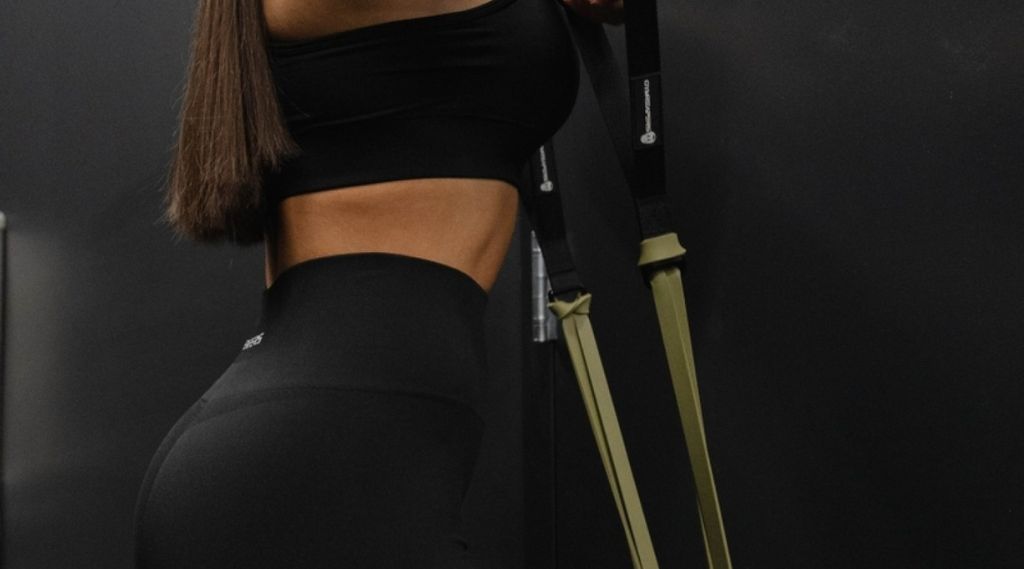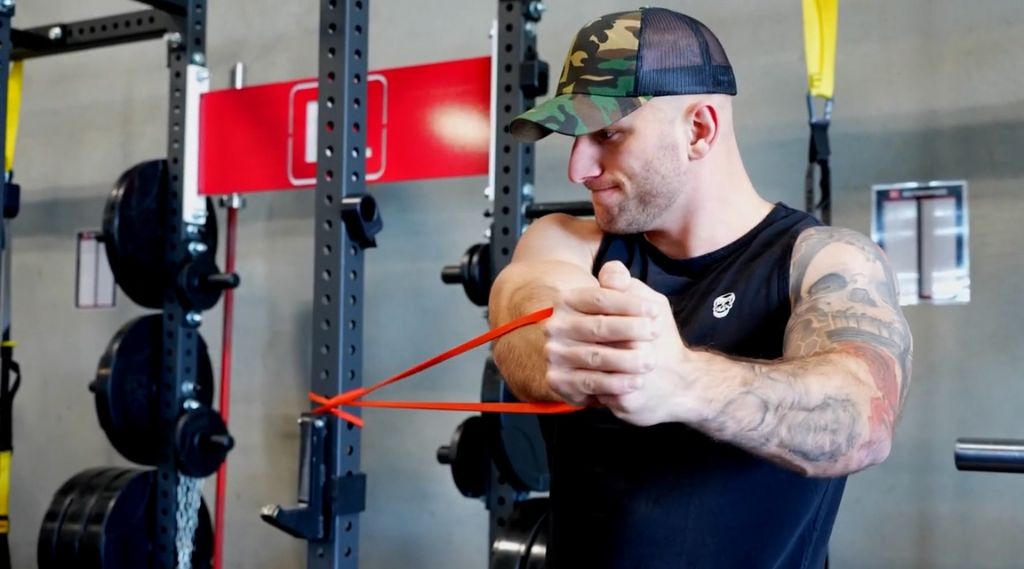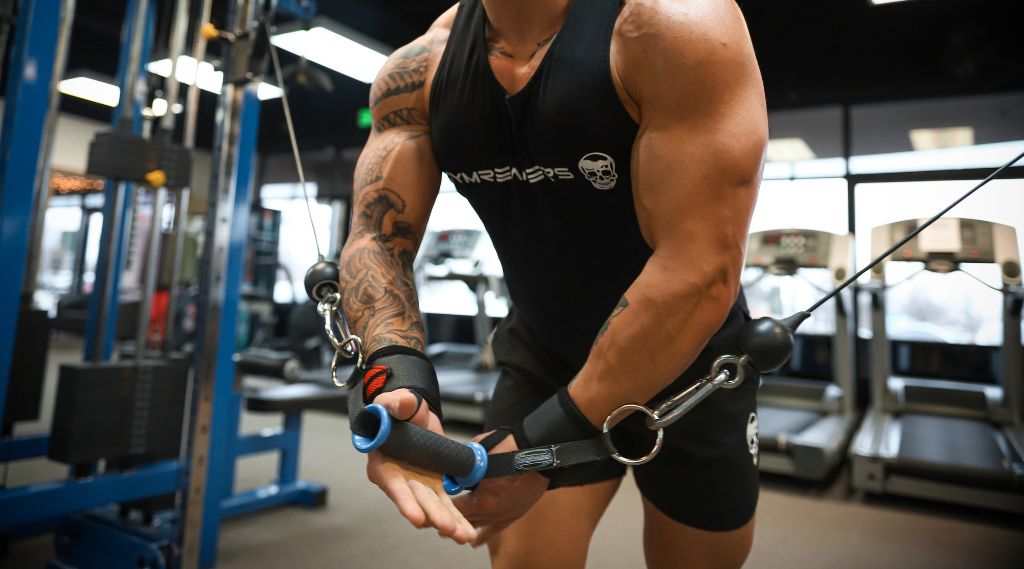Banded lateral raises are a great exercise that you can add to your shoulder routine when you’re working with limited equipment, as long as you’re performing them correctly.
The proper way to perform banded lateral raises is to stand on a band and raise your arms to shoulder height against the band resistance, keeping a slight bend in the elbows. This exercise is a convenient option for those who want to build or strengthen their shoulders at home or while traveling.
To ensure you’re getting the most out of your banded lateral raises, I’ll teach you how to perform them correctly, address some common mistakes (& how to avoid them), and explain how to integrate them into your training routine.
Key Takeaways
Muscles Worked With Lateral Raises

Lateral raises primarily target the lateral deltoids, which are the muscles located on the sides of the shoulders. These muscles are responsible for raising the arms away from the body in a lateral motion.
Lateral raises also engage the anterior deltoids (front of the shoulders), the posterior deltoids (rear of the shoulders), and the upper trap muscles to a lesser extent.
By incorporating lateral raises with bands into your workout routine, you can effectively strengthen and develop these shoulder muscles to build a stronger and more aesthetic physique.
How To Do Lateral Raises With Bands: Step-By-Step Guide
Learn how to do lateral raises properly by following these steps:
1. Begin by standing with your feet shoulder-width apart and place the resistance band under both feet (or one foot).
2. Grasp the handles(or ends) of the band with your palms facing inwards, allowing your arms to hang naturally by your sides.
3. Engage your core muscles and maintain a straight posture throughout the exercise.
4. Keeping a slight bend in your elbows, simultaneously raise both arms out to the sides until they reach shoulder level. Your palms should be facing the floor.
5. Pause for a brief moment at the top of the movement, ensuring that your shoulder blades are squeezed together.
6. Slowly lower your arms back down to the starting position in a controlled manner.
7. Repeat the movement for the desired number of repetitions.
8. You can increase the amount of tension on the band by stepping your feet further apart or by crossing it to form an “X”.
Pro Tip: Position your hands as if you were slowly pouring out a jug of water with each hand; this should cause you to have your pinky fingers slightly higher than your thumbs, which helps to engage the lateral delts more effectively.
Related Articles:
Common Banded Lateral Raise Mistakes
Despite their simplicity, banded lateral raises (and lateral raises in general) are often performed incorrectly. To make the most of this exercise it’s important to be aware of these common mistakes and how to correct them.
Mistake #1: Using Excessive Momentum
One common mistake is swinging the arms or using excessive momentum to lift the bands. This reduces the effectiveness of the exercise and can lead to improper muscle activation.
This mistake typically occurs when you’re using too much resistance or you’re just getting sloppy with your technique.
How to Fix: Stay Tight
Focus on bracing your core and squeezing your glutes to ensure that you have a more stable base to pull from, this will help increase your strength and stability in this exercise which will help you put more emphasis on the target muscles.
Mistake #2: Lifting Too Heavy
Similar to the first mistake, choosing a band with too much resistance can compromise your form and prevent you from fully engaging the targeted muscles.
You’ll know that you’re using too much resistance if you’re unable to complete the full range of motion on all your reps. You should be able to pull the band to chest height (just below the shoulder).
How To Fix: Lower The Resistance
Choose a band resistance that allows you to complete the full range of motion on every rep. The last rep should be challenging but not so challenging that you can’t get the band to chest height.
If you’re struggling to pull both arms at a time, even with a lighter band, then try performing it with one arm at a time. This will give you more control over the level of resistance that your band offers. Here’s a video tutorial for reference.
Mistake #3: Raising Your Arms Too High
Most lifters will want to avoid lifting their arms above shoulder level as this can place unnecessary stress on the shoulder joint, increase the risk of shoulder impingement, and lead to higher activation of the trap muscles (rather than the delts).
How To Fix: Slow Down
Although it’s important to maintain a full range of motion, there is such a thing as too much range of motion. Focus on slowing down the movement by adding a tempo to become more aware of your range of motion, rather than performing the movement as quickly as possible and overdoing it.
Stopping slightly below your shoulders and squeezing the deltoid muscles at the top will get you the most out of this movement.
Mistake #4: Shrugging the Shoulders
Letting your traps take over the movement is the mistake I see most often with banded lateral raises because some people don’t know how to disengage their traps to allow the delts to do their job.
You can tell the traps are taking over if you start to shrug as you pull the band up to chest height. If you’ve been doing this for a while then you’ve probably noticed that your traps are getting bigger but your lateral delts are failing to grow.
How to Fix: Focus On The Distance Between Your Shoulders & Ears
Keep your shoulder blades back and down away from your ears throughout the entire movement. If you struggle to keep from shrugging as you pull, then lower the weight and really concentrate on performing the movement correctly.
If you’ve been performing lateral raises incorrectly for a while, then you may not be able to feel that your shoulders are shrugging, so set yourself up in front of a mirror to see if you’re actually moving correctly.
Implementing Banded Lateral Raises Into Your Training Routine

To incorporate banded lateral raises into your training routine, consider the following factors.
Sets and Repetitions
Begin with 3-4 sets of 8-20 repetitions.
Higher reps will help more with muscular endurance and growth while lower reps and more resistance will help develop a stronger muscle.
You should avoid doing less than 8 reps because the load will be too heavy and make it hard to maintain proper technique. Similarly, doing more than 20 reps is not as productive as the resistance won’t be high enough for you to build strength.
Load
Start with a resistance band that challenges your muscles without compromising your form. As you progress, you can increase the resistance by using a thicker band or by adding more bands for added intensity.
For example, you can start with a band that offers 20-35 lbs of resistance for 3 sets of 8 reps and work toward performing 3-4 sets of 20 reps with this band before moving onto a heavier band that offers 30-60 lbs of resistance for 3 sets of 8 reps.
Frequency
Aim to perform lateral raises with bands 1-3 times per week, allowing for adequate rest and recovery between sessions. Your delts will recover more quickly because they are smaller muscles; however, they will need at least one day of rest between sessions.
For newer lifters or those looking to maintain deltoid size, training them once a week may be sufficient. However, for those pursuing muscle growth and strength development, 3 times a week may be best.
Exercise Order
It's generally recommended to perform lateral raises with bands after your compound exercises, such as overhead presses or bench presses.
This ensures that your muscles are pre-fatigued and allows for better isolation of the shoulder muscles during the exercise. Additionally, this will help you get more out of your compound movements which are more effective for overall strength and development of the upper body.
Best Bands For Lateral Raises

When it comes to selecting the right resistance bands for lateral raises, quality and durability are essential. My top recommendation is Gymreaper's Resistance Bands because these bands are made from premium-quality materials, ensuring longevity.
They come in a variety of resistance levels, allowing you to choose the appropriate band to suit your current fitness level and encourage progression.
If you’re someone who prefers a more comfortable grip when performing banded lateral raises, back exercises, bicep exercises, or tricep exercises, then these band handles are another worthwhile investment.











Hinterlasse einen Kommentar
Alle Kommentare werden vor der Veröffentlichung geprüft.
Diese Website ist durch hCaptcha geschützt und es gelten die allgemeinen Geschäftsbedingungen und Datenschutzbestimmungen von hCaptcha.